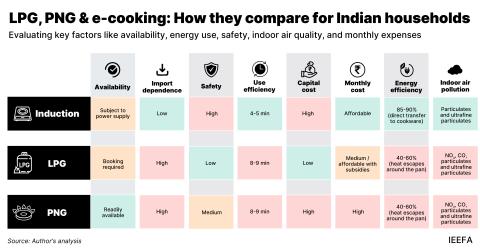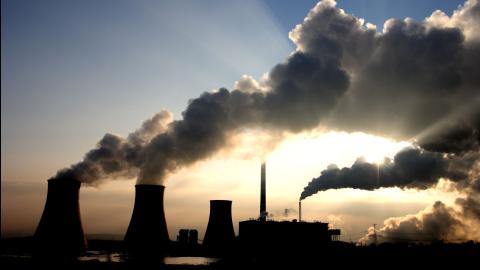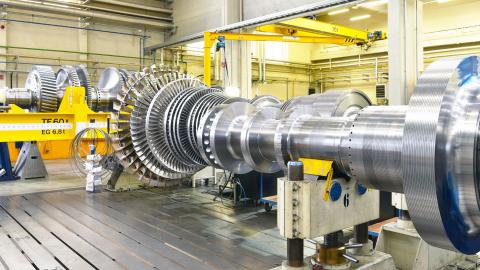A Just Transition for Jharkhand—investing in the state’s low-carbon future

Upfront costs of transitioning from coal to low-carbon industries will be more than offset by long-term economic and social benefits.
Key Takeaways:
Coal and petroleum contribute 32% to the state’s own revenue, exposing Jharkhand to major fiscal risks as fossil fuel use declines.
The report estimates that Jharkhand will need an estimated US$256 billion (Rs21.52 lakh crore) between 2026 and 2070 to transition from fossil fuels, covering coal mining, thermal power, and steel production, alongside social support and economic diversification to maintain social and economic stability.
More than US$12.5 billion (Rs1.05 lakh crore) will be needed to reskill, compensate and support workers and livelihoods dependent on the fossil fuel economy. Public funds alone are not sufficient to finance the transition, with private investment and non-government concessional sources of capital being essential.
Economic diversification will more than offset the loss of coal-based revenue in the state’s budget, adding an estimated Rs6.7 lakh crore (US$79.3 billion) to the state economy cumulatively by 2070, with the resultant increase in central government taxes and duties further supporting Jharkhand’s transition.
3 October 2025 (IEEFA South Asia): The long-term economic benefits of decarbonising and low carbon diversification of Jharkhand’s economy, more than compensate for the significant upfront costs, a new report by the Institute for Energy Economics and Financial Analysis (IEEFA) finds.
The report—Jharkhand’s Just Transition: A roadmap for economic growth and diversification—was prepared by IEEFA South Asia as part of the state government’s Task Force on Sustainable Just Transition.
The roadmap details the costs of coalmine and thermal power plant closure and remediation, and of steel sector decarbonisation, these sectors being prioritised for their size, economic importance, and just transition implications. It then models decadal transition expenditures, identifies high-potential diversification sectors, and proposes an integrated sustainable finance framework designed to mobilise private capital while ensuring an equitable transition for all stakeholders.
It estimates Jharkhand will require US$256 billion (Rs21.52 lakh crore) from 2026 to 2070 to transition from these fossil fuel dominant sectors without disrupting the social infrastructure.
“This shift entails phasing out carbon-intensive assets, building new low-carbon capacity, and mobilising unprecedented levels of capital,” says co-author Shantanu Srivastava, IEEFA’s research lead, sustainable finance and climate risk.
While these upfront costs are significant, the report underscores that the long-term benefits in terms of new revenues, jobs, and industrial ecosystems will far outweigh them.
The concentration of heavy industries makes Jharkhand an ideal proving ground for a Just Transition to a diversified, low-carbon economy that could become a model for other states and key to India’s achieving its ambitious climate targets.
Jharkhand’s vast renewable energy potential, combined with its industrial base and critical mineral reserves, positions the state to emerge as a hub for low-carbon manufacturing, ranging from EVs, solar panels and battery energy storage systems (BESS) to green hydrogen production. At the same time, natural farming and other, nature-based solutions can strengthen rural livelihoods, open opportunities in carbon markets, and enhance climate resilience.
Crucially, the study underscores that while public funds will play a catalytic role, most of the required financing will need to come from beyond state government budgets, through private investment, multilateral concessional capital and innovative blended finance structures. With clear and consistent policies, Jharkhand can attract billions in private and concessional capital, unlocking new infrastructure, industrial clusters, and clean energy innovation.
This massive upfront investment required will also deliver a healthy financial dividend, with a net gain of Rs6.7 lakh crore (US$79.3 billion) to the state government budget by 2070, IEEFA estimates. This does not include any resultant increases in central government taxes and duties.
“Diversifying the state’s economy into new, low-carbon sectors will add to its GDP, contributing materially towards Jharkhand’s economic growth,” Srivastava says. “Thus, the transition will more than compensate for the state’s lost coal-based revenues.”
Beyond the fiscal dimension, the transition promises wide-ranging just transition benefits. More than US$12.5 billion (Rs1.05 lakh crore) will be required to reskill, compensate, and support workers and communities dependent on coal, but this social investment will ensure that vulnerable communities are not left behind, but thrive in a low-carbon economy.
The report emphasises, however, that these outcomes will not materialise automatically. Achieving them will require strong political commitment, early investments in human capital, and an enabling financial and regulatory ecosystem. Governance and institutional capacity must also be strengthened to ensure transparent implementation and to secure the confidence of different stakeholders.
“This transition is both a high-risk challenge and a high-return opportunity. If Jharkhand acts now, it can not only safeguard its economy and workforce from the decline of coal but also position itself at the forefront of India’s low-carbon growth story,” says co-author Soni Tiwari, energy finance analyst, South Asia, at IEEFA.
Read the report: Jharkhand’s Just Transition: A Roadmap for Economic Growth and Diversification
Read the briefing note: Transforming Jharkhand's economy in line with India's net-zero ambitions
Media contact: Prionka Jha ([email protected]) Ph: +91 9818884854
Author contact: Shantanu Srivastava ([email protected])
About IEEFA: The Institute for Energy Economics and Financial Analysis (IEEFA) examines issues related to energy markets, trends, and policies. The Institute’s mission is to accelerate the transition to a diverse, sustainable and profitable energy economy. (ieefa.org)















